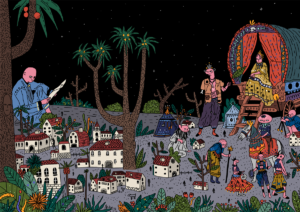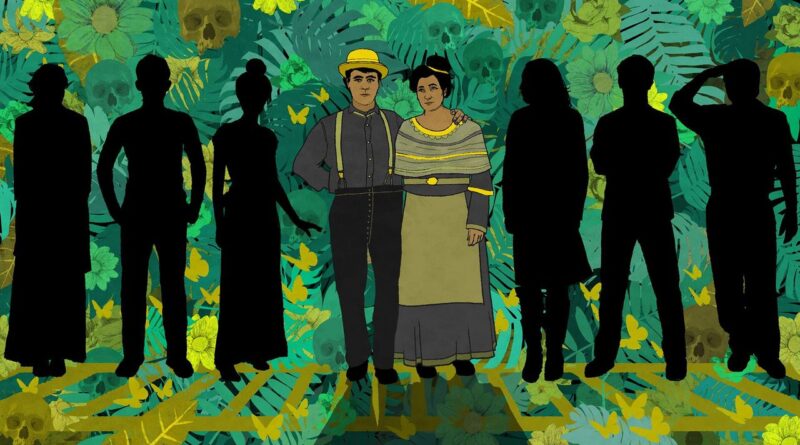Exploring the Magical Realism of “One Hundred Years of Solitude”
Contents
Introduction:
– Briefly introduce Gabriel García Márquez and his masterpiece “One Hundred Years of Solitude.”
– Highlight the novel’s significance in Latin American literature and its impact on the genre of magical realism.
1. Plot Overview:
– Provide a summary of the plot, focusing on the multi-generational saga of the Buendía family in the fictional town of Macondo.
– Discuss key events, characters, and themes such as solitude, love, power, and the cyclical nature of history.
2. Magical Realism Elements:
– Explain the concept of magical realism and how García Márquez seamlessly blends magical elements with realistic settings and events in the novel.
– Analyze specific instances of magical realism in “One Hundred Years of Solitude,” such as the levitating priest, the mysterious gypsy Melquíades, and the yellow butterflies.
3. Themes and Symbolism:
– Explore the major themes portrayed in the novel, including the Buendía family’s quest for identity and meaning, the effects of colonialism and modernization, and the inevitability of fate.
– Interpret the symbolism of recurring motifs like the Buendía family names, the banana plantation, and the ghostly figures that haunt the town.
4. Literary Style and Narrative Technique:
– Discuss García Márquez’s unique writing style, characterized by vivid imagery, lyrical prose, and nonlinear storytelling.
– Analyze the use of flashbacks, foreshadowing, and the cyclical structure of time in the narrative.
5. Impact and Legacy:
– Examine the critical reception of “One Hundred Years of Solitude” upon its publication and its subsequent influence on literature and culture worldwide.
– Discuss García Márquez’s Nobel Prize in Literature in 1982 and the novel’s enduring popularity and relevance in contemporary society.
6. Cinematic Adaptations and Cultural References:
– Mention any film or television adaptations of the novel and their portrayal of its magical realism elements.
– Explore how “One Hundred Years of Solitude” has been referenced in popular culture, music, art, and other forms of media.
7. Reader’s Reflections and Discussion:
– Share personal reflections or insights on the novel’s themes, characters, and impact on readers.
– Encourage readers to engage in discussions about “One Hundred Years of Solitude,” its interpretations, and its relevance in today’s world.
8. Cultural and Historical Context:
– Provide background information on Colombia’s history, politics, and social dynamics during the time period in which the novel is set.
– Discuss how García Márquez’s own experiences and observations of Colombian society influenced the themes and characters in the novel.

9. Character Analysis:
– Explore key characters such as José Arcadio Buendía, Úrsula Iguarán, Colonel Aureliano Buendía, and Amaranta. Discuss their motivations, relationships, and symbolic significance within the narrative.
– Analyze the character development and evolution of the Buendía family across generations.
10. Love, Passion, and Tragedy:
– Examine the themes of love, desire, and romantic entanglements in “One Hundred Years of Solitude,” including the doomed love affairs and familial bonds that shape the characters’ destinies.
– Discuss how García Márquez portrays passion and tragedy as intertwined forces driving the narrative forward.
11. Political and Social Commentary:
– Interpret the novel’s exploration of power struggles, revolution, and the impact of political ideologies on society.
– Discuss García Márquez’s critique of imperialism, corruption, and social inequality as reflected in the events of Macondo.
12. Interconnectedness of Time and Memory:
– Explore the novel’s non-linear narrative structure and its depiction of time as cyclical rather than linear.
– Discuss the role of memory, nostalgia, and historical repetition in shaping the characters’ perceptions of their past, present, and future.
13. Influence on Latin American Literature:
– Discuss the broader impact of “One Hundred Years of Solitude” on the development of magical realism as a literary genre in Latin America.
– Explore how other authors and artists have been inspired by García Márquez’s storytelling techniques and thematic explorations.
14. Controversies and Interpretive Challenges:
– Address any controversies or debates surrounding the novel, such as its portrayal of gender roles, sexuality, and cultural representations.
– Encourage readers to critically engage with the text and consider multiple interpretations.
15. Educational and Academic Resources:
– Provide recommendations for educators, students, and scholars interested in studying “One Hundred Years of Solitude,” including discussion questions, scholarly essays, and related reading materials.
Conclusion:
– Reiterate the enduring significance of “One Hundred Years of Solitude” as a literary masterpiece and a reflection of universal themes and human experiences.
– Emphasize the novel’s ability to transcend cultural boundaries and resonate with readers of diverse backgrounds and perspectives.




